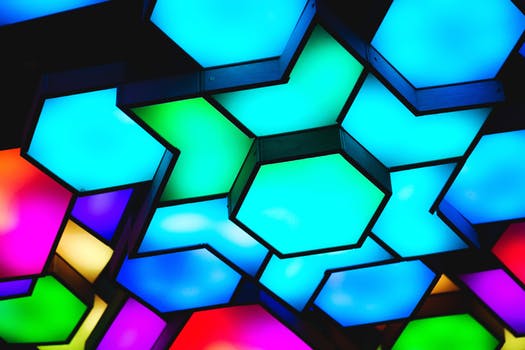TheDeveloperBlog.com
C-Sharp | Java | Python | Swift | GO | WPF | Ruby | Scala | F# | JavaScript | SQL | PHP | Angular | HTML
Computer Graphics Hidden Surface Removal
Computer Graphics Hidden Surface Removal with Computer Graphics Tutorial, Line Generation Algorithm, 2D Transformation, 3D Computer Graphics, Types of Curves, Surfaces, Computer Animation, Animation Techniques, Keyframing, Fractals etc.
Hidden Surface Removal
Types of hidden surface detection algorithms
Object space methods: In this method, various parts of objects are compared. After comparison visible, invisible or hardly visible surface is determined. These methods generally decide visible surface. In the wireframe model, these are used to determine a visible line. So these algorithms are line based instead of surface based. Method proceeds by determination of parts of an object whose view is obstructed by other object and draws these parts in the same color. Image space methods: Here positions of various pixels are determined. It is used to locate the visible surface instead of a visible line. Each point is detected for its visibility. If a point is visible, then the pixel is on, otherwise off. So the object close to the viewer that is pierced by a projector through a pixel is determined. That pixel is drawn is appropriate color. These methods are also called a Visible Surface Determination. The implementation of these methods on a computer requires a lot of processing time and processing power of the computer. The image space method requires more computations. Each object is defined clearly. Visibility of each object surface is also determined. Differentiate between Object space and Image space method
Similarity of object and Image space method
In both method sorting is used a depth comparison of individual lines, surfaces are objected to their distances from the view plane.  
Considerations for selecting or designing hidden surface algorithms: Following three considerations are taken:
Sorting: All surfaces are sorted in two classes, i.e., visible and invisible. Pixels are colored accordingly. Several sorting algorithms are available i.e.
Different sorting algorithms are applied to different hidden surface algorithms. Sorting of objects is done using x and y, z co-ordinates. Mostly z coordinate is used for sorting. The efficiency of sorting algorithm affects the hidden surface removal algorithm. For sorting complex scenes or hundreds of polygons complex sorts are used, i.e., quick sort, tree sort, radix sort. For simple objects selection, insertion, bubble sort is used. CoherenceIt is used to take advantage of the constant value of the surface of the scene. It is based on how much regularity exists in the scene. When we moved from one polygon of one object to another polygon of same object color and shearing will remain unchanged. Types of Coherence
1. Edge coherence: The visibility of edge changes when it crosses another edge or it also penetrates a visible edge. 2. Object coherence: Each object is considered separate from others. In object, coherence comparison is done using an object instead of edge or vertex. If A object is farther from object B, then there is no need to compare edges and faces. 3. Face coherence: In this faces or polygons which are generally small compared with the size of the image. 4. Area coherence: It is used to group of pixels cover by same visible face. 5. Depth coherence: Location of various polygons has separated a basis of depth. Depth of surface at one point is calculated, the depth of points on rest of the surface can often be determined by a simple difference equation. 6. Scan line coherence: The object is scanned using one scan line then using the second scan line. The intercept of the first line. 7. Frame coherence: It is used for animated objects. It is used when there is little change in image from one frame to another. 8. Implied edge coherence: If a face penetrates in another, line of intersection can be determined from two points of intersection. Algorithms used for hidden line surface detection
Next TopicBack Face Removal Algorithm
|
Related Links:
- Computer Network | Transport Layer Protocols
- Computer Network | Application Layer
- Computer Graphics Cathode Ray Tube | CRT
- Computer Graphics Direct View Storage Tubes
- Computer Graphics Flat Panel Display
- Computer Graphics | Input Devices
- Computer Graphics Scan Conversion Definition
- Computer Graphics | Trackball
- Computer Graphics | Light Pen
- Computer Graphics | Image Scanner
- Computer Graphics | Output Devices
- Computer Graphics | Plotters
- Computer Graphics Scan Converting a Point
- Computer Graphics Scan Converting a Straight Line
- Computer Graphics DDA Algorithm
- Computer Graphics Bresenham's Line Algorithm
- Computer Graphics Defining a Circle
- Computer Graphics Boundary Fill Algorithm
- Computer Graphics Flood Fill Algorithm
- Computer Graphics Scan Line Polygon Fill Algorithm
- Computer Graphics | Line Clipping
- Computer Graphics Introduction of Transformation
- Computer Graphics Translation
- Computer Graphics Scaling
- Computer Graphics Rotation
- Computer Graphics Reflection
- Computer Graphics Shearing
- Computer Graphics Homogeneous Coordinates
- Computer Graphics Composite Transformation
- Computer Graphics Window
- Computer Graphics Window to Viewport Co-ordinate Transformation
- Computer Graphics Zooming
- Computer Graphics Panning
- Computer Network | Error Correction
- Computer Network | Error Detection
- Computer Architecture VS Computer Organization
- Computer Instructions | Computer Organization and Architecture Tutorial
- Computer Registers
- Computer Network Routing | Types of Routing
- Computer Network | Digital Signature
- PGP - Pretty Good Privacy
- Computer Graphics Programs
- Computer Graphics | Clipping
- Computer Network Tutorial
- Computer Graphics Tutorial
- Computer Graphics | Text Clipping
- Computer Graphics | Polygon
- Computer Graphics Pointing and Positioning Techniques
- Computer Graphics Elastic or Rubber Band Techniques
- Computer Graphics Color CRT Monitors
- Computer Graphics | Point Clipping
- Computer Graphics Dragging
- Computer Graphics 3D Shearing
- Computer Graphics Introduction of Shading
- Computer Network | TCP/IP model
- Computer Graphics Constant Intensity Shading
- Computer Graphics Gouraud shading
- Computer Graphics Phong Shading
- Computer Graphics Animation
- Computer Graphics Hidden Surface Removal
- Computer Graphics Back Face Removal Algorithm
- Computer Graphics Application Areas of Animation
- Computer Graphics Animation Functions
- Computer Graphics 3D Graphics
- Computer Graphics 3D Transformations
- Computer Graphics 3D Scaling
- Computer Graphics 3D Rotation
- Computer Graphics 3D Rotation about Arbitrary Axis
- Computer Graphics 3D Inverse Transformations
- Computer Graphics 3D Reflection
- Computer Organization and Architecture Tutorial | COA Tutorial
- Computer Graphics Bresenham's Circle Algorithm
- Computer Graphics Midpoint Circle Algorithm
- Computer Graphics Painter's Algorithm
- Computer Graphics Scan Line Algorithm
- Computer Graphics Area Subdivision Algorithm
- Computer Graphics 3D Modelling System
- Computer Graphics Projection
- Computer Graphics Perspective Projection
- Computer Graphics Parallel Projection
- Computer Network Digital Transmission
- Top 50 Computer Graphics Interview Questions (2021)
- Computer Graphics Midpoint Ellipse Algorithm
- HTTP - HyperText Transfer Protocol
- Computer Graphics Z-Buffer Algorithm
- Computer Graphics Display Processor
- Computer Network | Routing Algorithm
- Learn Computer Fundamentals Tutorial
- Computer Graphics Scan converting a Ellipse
- Computer Graphics Polynomial Method
- Computer Graphics Trignometric Method
- Computer Network Introduction
- Computer Network Components
- Computer Network Topologies
- Computer Network | Transmission Modes
- Computer Network Models
- Computer Network | Switching Techniques
- Computer Network | Switching Modes
- Computer Network | Client and Server Model
- DNS - Domain Name System
- FTP - File Transfer Protocol
- Telnet - Terminal Network
- Computer Network Features
- Computer Network Architecture
- Computer Network | Switching
- Computer Network Security
- Computer Network Privacy
- Computer Network | Transport Layer


